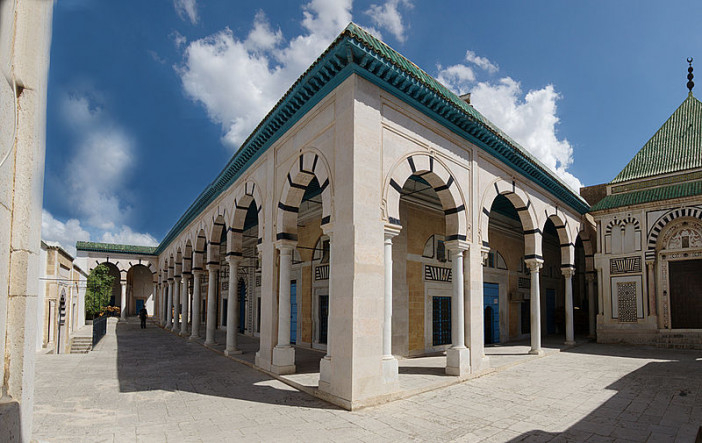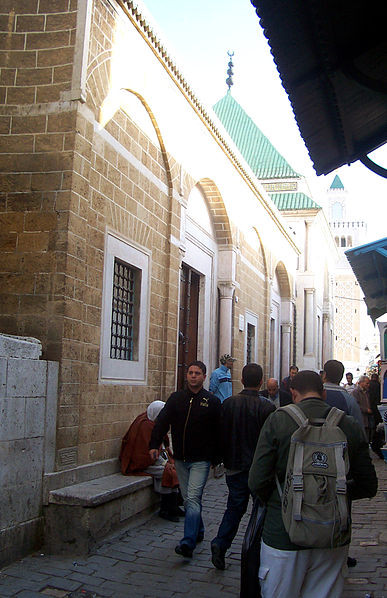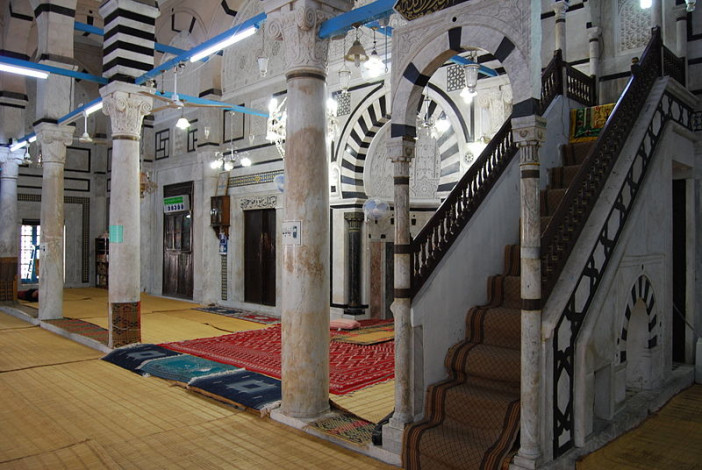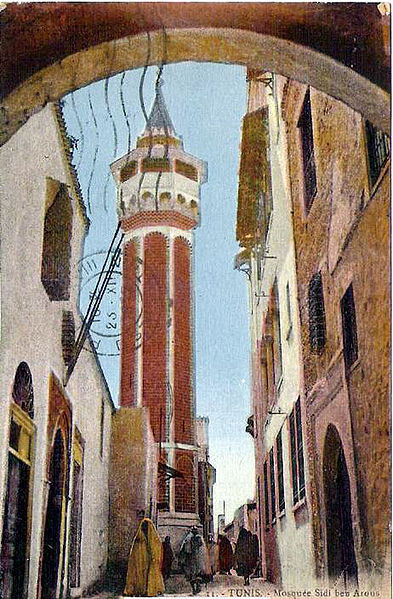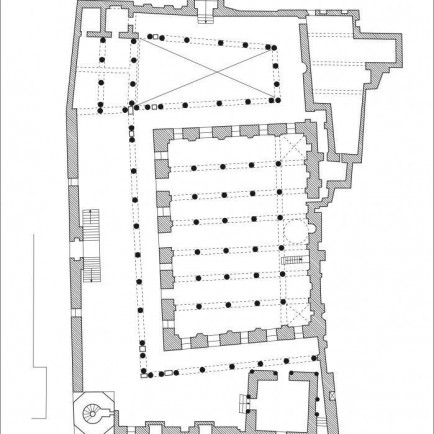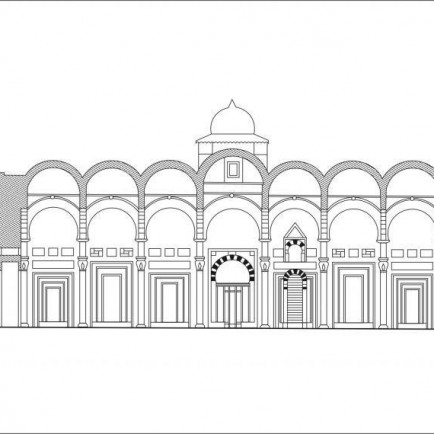Hammouda Pacha Mosque
History
Built in 1655 by Hammouda Pacha, it is the second mosque to be built by the Hanafi rite in Tunis.
Urban and Architectural
The Hanafi Mosque is recognizable by its octagonal minaret. Its seventeenth-century Turkish architecture includes a marble door, a green tiled roof and three courtyards. In addition to the richness of its ornamentation of Venetian influence (decorations of flowers and polychrome marbles), the Hammouda-Pasha mosque is distinguished by its graceful minaret topped with a balcony and covered with a pyramidal framework.
The prayer room, rectangular in plan, measures 24 by 17 meters. It is widely open to the courtyards by a series of doors and windows framed in finely carved marble at the pedestals. The hall, covered with barrel vaults, is divided into seven naves and five bays; the naves, of which the middle one is wider, are perpendicular to the wall of the qibla.
The arches are based on 48 columns with a curved barrel, surmounted by a capital with volutes of the neo-Ionic type. The walls are covered with marble panelling which gives way, at the level of the tympanums of the arches, to a carved plaster decoration. In addition, the courtyard is pierced by large windows with richly crafted irons, which is a unique case of Tunisian religious architecture. This provision mitigates the classic separation between secular and sacred space and indicates an evolution in the status of the mosque. It hosts the mausoleum of its builder, in the right courtyard, which inspired the mausoleum of President Habib Bourguiba in Monastir.
Description
Hammouda-Pasha Mosque (Arabic: جامع حمودة باشا) is a mosque in Tunis built by the Mouradite bey Hammouda Pasha Bey in 16551. It is located at the corner of Sidi Ben Arous Street and Kasbah Street and adjoins the Sidi Ben Arous Zaouïa.
References
https://islamicart.museumwnf.
"Lieux de culte Municipalité de Tunis" (in French). Government of Tunis. Archived from the original on August 11, 2009. Retrieved March 03, 2022
Details
Location
Rue Sidi Ben Arous, Tunis, Tunisia
Worshippers
204
Owners
Muradids Dynasty
Architect Name
Year of Build
1655
Area
1493
Drawings
Map
History
Built in 1655 by Hammouda Pacha, it is the second mosque to be built by the Hanafi rite in Tunis.
Urban and Architectural
The Hanafi Mosque is recognizable by its octagonal minaret. Its seventeenth-century Turkish architecture includes a marble door, a green tiled roof and three courtyards. In addition to the richness of its ornamentation of Venetian influence (decorations of flowers and polychrome marbles), the Hammouda-Pasha mosque is distinguished by its graceful minaret topped with a balcony and covered with a pyramidal framework.
The prayer room, rectangular in plan, measures 24 by 17 meters. It is widely open to the courtyards by a series of doors and windows framed in finely carved marble at the pedestals. The hall, covered with barrel vaults, is divided into seven naves and five bays; the naves, of which the middle one is wider, are perpendicular to the wall of the qibla.
The arches are based on 48 columns with a curved barrel, surmounted by a capital with volutes of the neo-Ionic type. The walls are covered with marble panelling which gives way, at the level of the tympanums of the arches, to a carved plaster decoration. In addition, the courtyard is pierced by large windows with richly crafted irons, which is a unique case of Tunisian religious architecture. This provision mitigates the classic separation between secular and sacred space and indicates an evolution in the status of the mosque. It hosts the mausoleum of its builder, in the right courtyard, which inspired the mausoleum of President Habib Bourguiba in Monastir.
Description
Hammouda-Pasha Mosque (Arabic: جامع حمودة باشا) is a mosque in Tunis built by the Mouradite bey Hammouda Pasha Bey in 16551. It is located at the corner of Sidi Ben Arous Street and Kasbah Street and adjoins the Sidi Ben Arous Zaouïa.


